 Does consciousness of artists' reprehensible behaviour (Gill in 2006 would no doubt be in prison) put up a barrier between the viewer and the work?
Does consciousness of artists' reprehensible behaviour (Gill in 2006 would no doubt be in prison) put up a barrier between the viewer and the work? Or does knowledge of the artist's life, fallibilities included, amplify and enrich our understanding of the art?
Or does knowledge of the artist's life, fallibilities included, amplify and enrich our understanding of the art?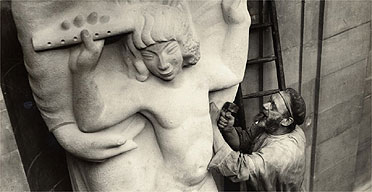 Arthur Eric Rowton Gill (22 February 1882 – 17 November 1940) was a Britishsculptor, typeface designer, stonecutter and printmaker, who was associated with
Arthur Eric Rowton Gill (22 February 1882 – 17 November 1940) was a Britishsculptor, typeface designer, stonecutter and printmaker, who was associated with theArts and Crafts movement.Gill’s drawings are extremely
theArts and Crafts movement.Gill’s drawings are extremely  indecent. I can assure you that the critics were not exaggerating. The prints contain many nudes,
indecent. I can assure you that the critics were not exaggerating. The prints contain many nudes,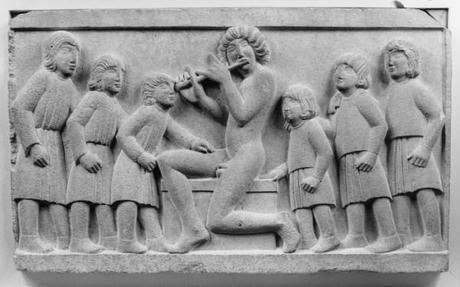 including pornographic and blasphemous ones. For instance, some depict male and
including pornographic and blasphemous ones. For instance, some depict male and female nude saints with their respective halos performing the sexual act;
female nude saints with their respective halos performing the sexual act;
 another entitledGod Sending shows a naked and sexually aroused Christ descending to earth; yet another entitled
another entitledGod Sending shows a naked and sexually aroused Christ descending to earth; yet another entitled  Earth Receiving shows what appears to be the same Christ fornicating with a woman, possibly representing the earth.
Earth Receiving shows what appears to be the same Christ fornicating with a woman, possibly representing the earth.  He is a controversial figure, with his well-known religious views and subject matter being seen as at odds with his sexual and paraphiliacbehaviour and erotic art.
He is a controversial figure, with his well-known religious views and subject matter being seen as at odds with his sexual and paraphiliacbehaviour and erotic art.
Chichester is the right place for reassessing Gill, since it was his home town. Gill, for all his wildness, was a very small-town person. He lived in Chichester,
 where his father was a clergyman, through his formative teenage years, the time when this most phallic of artists discovered the unexpected functioning of his own male organ: "What marvellous thing was this that suddenly transformed a mere water tap into a pillar of fire."
where his father was a clergyman, through his formative teenage years, the time when this most phallic of artists discovered the unexpected functioning of his own male organ: "What marvellous thing was this that suddenly transformed a mere water tap into a pillar of fire." The impecunious curate's family were crowded into a little terrace house on Chichester's North Walls, and
The impecunious curate's family were crowded into a little terrace house on Chichester's North Walls, and it seems likely that incestuous relations with at least one of Eric's sisters started here.The years in Chichester gave him
it seems likely that incestuous relations with at least one of Eric's sisters started here.The years in Chichester gave him Gill responded to this ideal of virtuous apartness in a sequence of notoriously rigorous art and craft communities from which he fulminated against the 20th-century horrors of typewriters,
Gill responded to this ideal of virtuous apartness in a sequence of notoriously rigorous art and craft communities from which he fulminated against the 20th-century horrors of typewriters, Bird's custard powder, contraception and men wearing the trousers that constricted and degraded "man's most precious ornamen
Bird's custard powder, contraception and men wearing the trousers that constricted and degraded "man's most precious ornamen
Gill was born in 1882 in Brighton, Sussex (now East Sussex) and in 1897 the family moved to Chichester. He studied at Chichester Technical and Art School, and in 1900 moved to London to train as an architect with the practice of W.D. Caroe,
He studied at Chichester Technical and Art School, and in 1900 moved to London to train as an architect with the practice of W.D. Caroe, specialists in ecclesiastical architecture. Frustrated with his training, he took evening classes in stonemasonry at Westminster Technical Institute and in
specialists in ecclesiastical architecture. Frustrated with his training, he took evening classes in stonemasonry at Westminster Technical Institute and in  calligraphy at the Central School of Arts and Crafts, where Edward Johnston,
calligraphy at the Central School of Arts and Crafts, where Edward Johnston,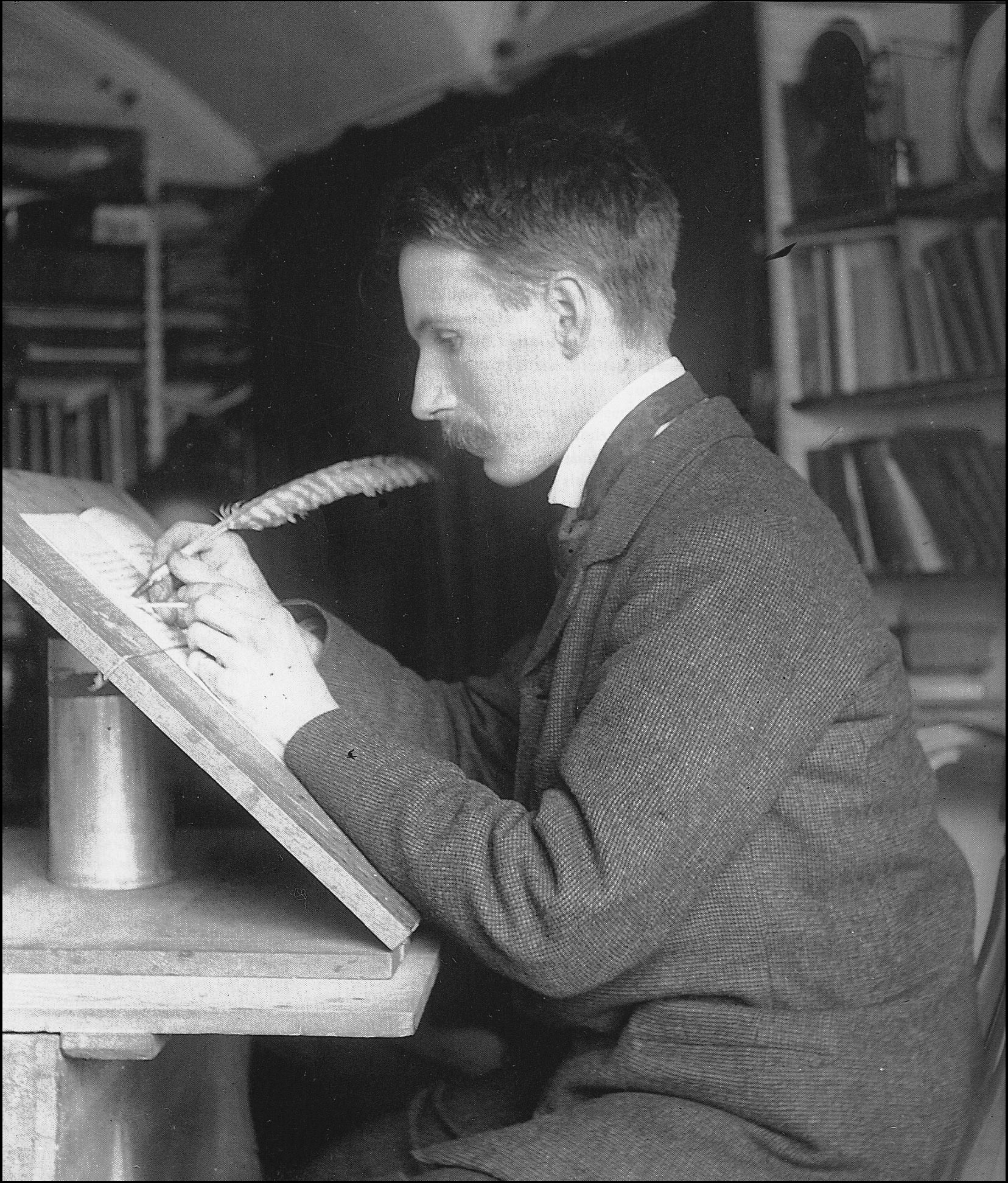 creator of the London Underground typeface, became a strong influence. In 1903 he gave up his architectural training to become a calligrapher, letter-cutter and monumental mason.
creator of the London Underground typeface, became a strong influence. In 1903 he gave up his architectural training to become a calligrapher, letter-cutter and monumental mason.
 He studied at Chichester Technical and Art School, and in 1900 moved to London to train as an architect with the practice of W.D. Caroe,
He studied at Chichester Technical and Art School, and in 1900 moved to London to train as an architect with the practice of W.D. Caroe, specialists in ecclesiastical architecture. Frustrated with his training, he took evening classes in stonemasonry at Westminster Technical Institute and in
specialists in ecclesiastical architecture. Frustrated with his training, he took evening classes in stonemasonry at Westminster Technical Institute and in  calligraphy at the Central School of Arts and Crafts, where Edward Johnston,
calligraphy at the Central School of Arts and Crafts, where Edward Johnston, creator of the London Underground typeface, became a strong influence. In 1903 he gave up his architectural training to become a calligrapher, letter-cutter and monumental mason.
creator of the London Underground typeface, became a strong influence. In 1903 he gave up his architectural training to become a calligrapher, letter-cutter and monumental mason.
After several years in London, establishing himself as a letter-cutter and monumental mason, Gill was drawn back to Sussex. He was by this time married to Ethel, daughter of the Chichester Cathedral sacristan, and had already committed adultery with their maid-of-all-work Lizzie.
He was by this time married to Ethel, daughter of the Chichester Cathedral sacristan, and had already committed adultery with their maid-of-all-work Lizzie..png) "First time of fornication since marriage," he entered in his diary for June 14 1906, prescient of more adulteries to come.
"First time of fornication since marriage," he entered in his diary for June 14 1906, prescient of more adulteries to come.  He moved his workshop, wife and children to Ditchling,
He moved his workshop, wife and children to Ditchling, near Lewes, acting out his theories of ideal integration: "Life and work and love and the bringing up of a family and clothes and social virtues and food and houses and games and songs and books should all be in the soup together."
near Lewes, acting out his theories of ideal integration: "Life and work and love and the bringing up of a family and clothes and social virtues and food and houses and games and songs and books should all be in the soup together."  He had started making sculpture, rejecting the modelling and pointing machine processes
He had started making sculpture, rejecting the modelling and pointing machine processes used by the majority of sculptors at this period, preferring the directness of the chisel on the stone.
used by the majority of sculptors at this period, preferring the directness of the chisel on the stone.
This was also the period at which Gill was making the almost life-size sculpture he entitled Fucking. This carving was over protectively rechristened Ecstasy when bought for the collection at Tate Britain,
This carving was over protectively rechristened Ecstasy when bought for the collection at Tate Britain, having been discovered abandoned in a boathouse at Birchington-on-Sea.
having been discovered abandoned in a boathouse at Birchington-on-Sea.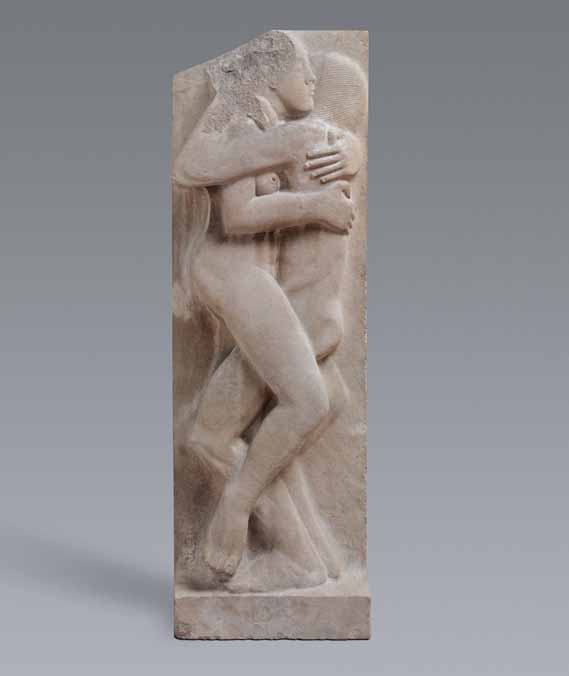 Is it relevant or is it a distraction to know that the subject of the carving is Gill's younger sister
Is it relevant or is it a distraction to know that the subject of the carving is Gill's younger sister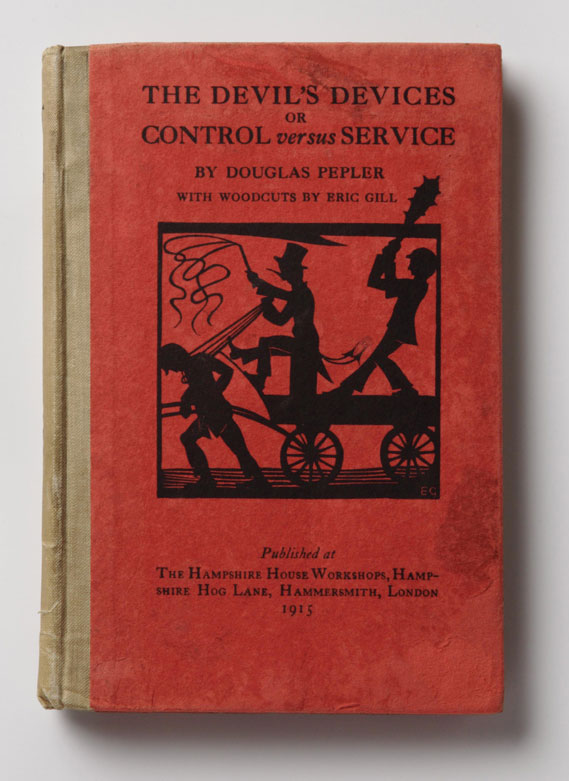 Gladys and her husband Ernest Laughton, entwined in a position of - well - ecstasy, and that Gill's own incestuous relationship with Gladys was then in progress,
Gladys and her husband Ernest Laughton, entwined in a position of - well - ecstasy, and that Gill's own incestuous relationship with Gladys was then in progress, continuing for most of their adult life? To me it is significant in stressing the artist's dependence on the known and familial: his passion was the personal, he would not use outside models. It certainly deepens understanding of the element of voyeurism in Gill's work.For fans of Gill's type design and printed works, a trip to the Ditchling Museum in Sussex
continuing for most of their adult life? To me it is significant in stressing the artist's dependence on the known and familial: his passion was the personal, he would not use outside models. It certainly deepens understanding of the element of voyeurism in Gill's work.For fans of Gill's type design and printed works, a trip to the Ditchling Museum in Sussex will also prove rewarding. Gill moved to Ditchling from London in 1907, and stayed there until 1924. Several significant life events occurred during his time there,
will also prove rewarding. Gill moved to Ditchling from London in 1907, and stayed there until 1924. Several significant life events occurred during his time there,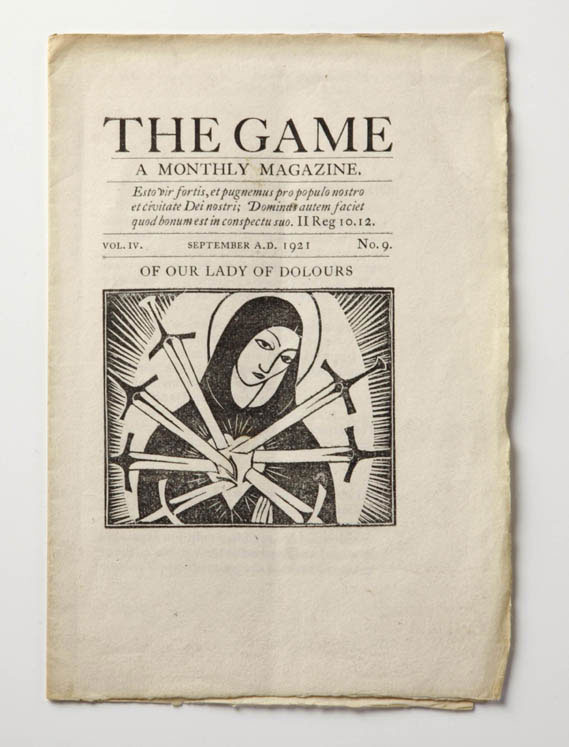 including the shift from being a craftsman to a fine artist (he had been working as a letter-cutter and calligrapher in London) and his conversion to Catholicism.
including the shift from being a craftsman to a fine artist (he had been working as a letter-cutter and calligrapher in London) and his conversion to Catholicism.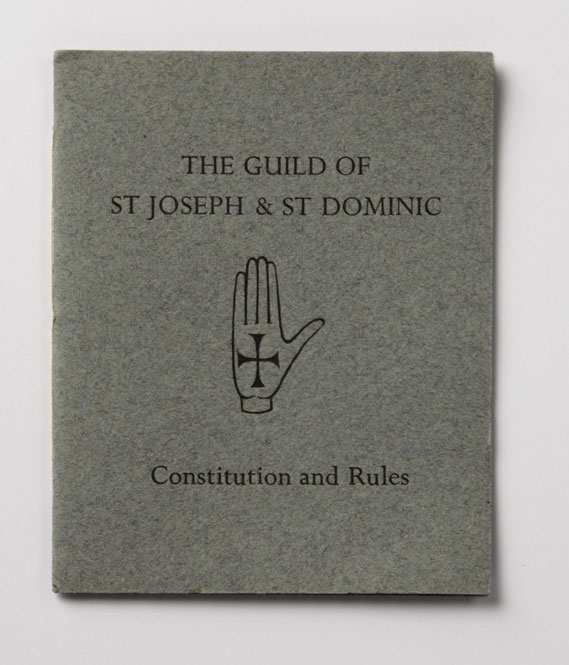 The museum offers an opportunity to view less well-known pieces of Gill’s design, alongside giving an insight into the community and landscape that was so central to his work
The museum offers an opportunity to view less well-known pieces of Gill’s design, alongside giving an insight into the community and landscape that was so central to his work during his time in Ditchling. A number of other artists and designers joined Gill there
during his time in Ditchling. A number of other artists and designers joined Gill there , and the Museum has a large collection of works made during this period (and also after Gill left), including typographic works by Edward Johnston, who taught Gill and followed him to the village
, and the Museum has a large collection of works made during this period (and also after Gill left), including typographic works by Edward Johnston, who taught Gill and followed him to the village . It was in Ditchling that Johnston designed the original typeface and logo for the London Underground.
. It was in Ditchling that Johnston designed the original typeface and logo for the London Underground.
In 1904 married to Ethel Hester Moore (1878–1961), and in 1907 he moved with his family to "Sopers", a house in the village of Ditchling in Sussex, which would later become the centre of an artists' community inspired by Gill. There he started producing sculpture – his first public success was Mother and Child (1912).
which would later become the centre of an artists' community inspired by Gill. There he started producing sculpture – his first public success was Mother and Child (1912).
In 1913, Gill became a Catholic. His father's Church of England was too easy-going for someone with Gill's spiritual and intellectual torments. He craved more strict authority, a degree of flagellation, his sins cast upon the rock that is Christ.T
Who but Gill would have been carving a life-size marble phallus, its dimensions exactly replicating his own, in the months of instruction leading up to his reception into the church at Brighton? Who else would have decided to leave the relative cosiness of Ditchling Village for Hopkins Crank,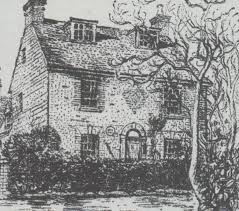 an unreconstructed Georgian squatter's cottage and outbuildings on Ditchling Common? As Gill now believed, "there can be no mysticism without asceticism". He became a member of the lay order of the
an unreconstructed Georgian squatter's cottage and outbuildings on Ditchling Common? As Gill now believed, "there can be no mysticism without asceticism". He became a member of the lay order of the 
Dominicans and took to wearing the girdle of chastity with his monastic habit. "Much good it did him," a friend said, unconvinced.
The family moved to the Crank with their three daughters, Betty then eight, Petra seven, and Joan, the youngest, three. They stayed on the Common for 11 years, until the girls were in their teens, becoming a kind of Catholic tourist attraction, a marvel of holy poverty in action. The Gill family grouped around the kitchen table, demonstrating the delights of home-killed pig and home-baked bread, was compared by one excited visitor to Holbein's painting of the family of St Thomas More.
The Gill family grouped around the kitchen table, demonstrating the delights of home-killed pig and home-baked bread, was compared by one excited visitor to Holbein's painting of the family of St Thomas More.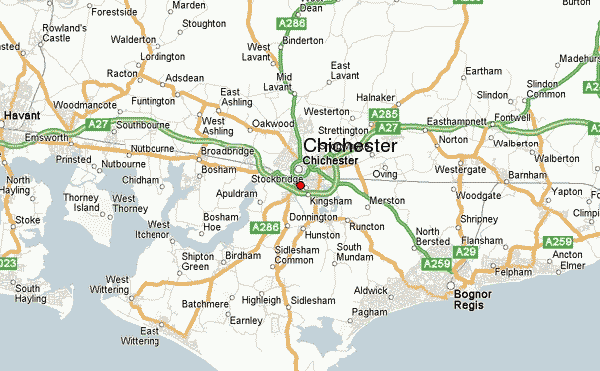
The growing girls were kept apart from their contemporaries, educated by their father and mother, enclosed by the routines of the workshops and the chapel. Modern fashions, contemporary mores did not encroach upon a childhood whose simplicity and sweetness is captured in Gill's exquisite series of life drawings of his pubescent daughter Petra. Girl in Bath, the nude teenager
upon a childhood whose simplicity and sweetness is captured in Gill's exquisite series of life drawings of his pubescent daughter Petra. Girl in Bath, the nude teenager  crouching in the bath tub, in a pose both homely and potentially erotic; Hair Combing, the girl standing, body plumply outlined against the long cascade of hair; The Plait, which catches the moment when the daughter is almost a woman but not quite. The Petra drawings were reworked as wood engravings and have been for many years among the most admired of all Gill's works.
crouching in the bath tub, in a pose both homely and potentially erotic; Hair Combing, the girl standing, body plumply outlined against the long cascade of hair; The Plait, which catches the moment when the daughter is almost a woman but not quite. The Petra drawings were reworked as wood engravings and have been for many years among the most admired of all Gill's works.
Do we like them the less knowing, as we know now, that during those years at Ditchling, Gill was habitually abusing his two elder daughters? When in 1980 I came upon the evidence, up to then suppressed, in Gill's private diaries in the University of California at Los Angeles,
When in 1980 I came upon the evidence, up to then suppressed, in Gill's private diaries in the University of California at Los Angeles, I cannot say I was totally surprised. The flesh-and-spirit tensions in his work are palpable: this was what had in the first place attracted me to Gill as the subject for critical biography. In his portraits of his children, I was already conscious of a sort of overbalance of tendresse.
I cannot say I was totally surprised. The flesh-and-spirit tensions in his work are palpable: this was what had in the first place attracted me to Gill as the subject for critical biography. In his portraits of his children, I was already conscious of a sort of overbalance of tendresse.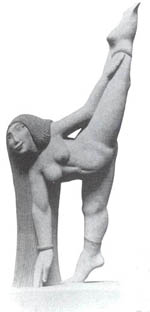
The discovery of Gill's precise and candid records in his diaries of his various sexual adventures and experiments was the sort of coup any biographer would long for and yet in some way dread. I knew that it could alter fundamentally perceptions of Gill, both as man of God and as artist. Impossible to view without a frisson, those delicate, delicious portraits of the teenage Petra. Having read Gill's own account of his experimental sexual connections with his dog in a later craft community at Pigotts near High Wycombe,
sexual connections with his dog in a later craft community at Pigotts near High Wycombe, 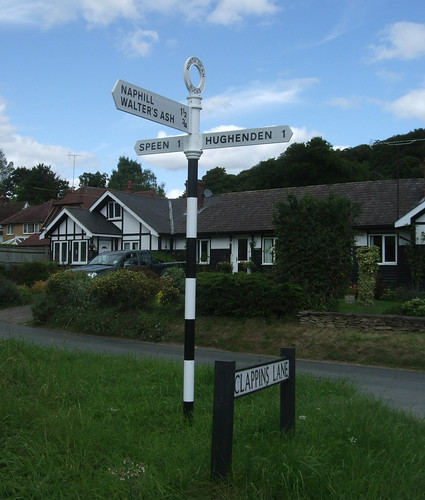 his woodcut The Hound of St Dominic develops some distinctly disconcerting features. The knowing affects the viewing. How can it not? But Gill is too good an artist, too ferocious and intrepid a controversialist, to be protected and glossed over. We need to see him whole.
his woodcut The Hound of St Dominic develops some distinctly disconcerting features. The knowing affects the viewing. How can it not? But Gill is too good an artist, too ferocious and intrepid a controversialist, to be protected and glossed over. We need to see him whole.
In 1924, when Gill's affairs in Ditchling had reached a crisis point, he suddenly left Sussex. With his tribal entourage of family and animals, apprentices, dependents, who included the painter David Jones, he settled in the ruined Benedictine monastery at Capel-y-ffin in the Black Mountains of Wales. Here he designed his brilliantly workmanlike typefaces for Monotype, typically throwing his reservations about machine production to the winds. Gill Sans, the sans serif typeface used on the covers of pre-war Penguin books, is rightly lauded in the current V&A Modernism exhibition as the first British modernist type design.
A self-described "disciple" of the Ceylonese philosopher and art historianAnanda Coomaraswamy , Gill was fascinated during this period by Indian temple sculpture. Along with his friend and collaborator Jacob Epstein,
, Gill was fascinated during this period by Indian temple sculpture. Along with his friend and collaborator Jacob Epstein,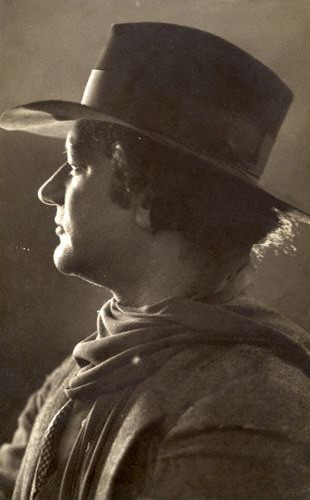 he planned the construction in the Sussex countryside of a colossal, hand-carved monument in imitation of the large-scale Jainstructures at Gwalior Fort in Madhya Pradesh
he planned the construction in the Sussex countryside of a colossal, hand-carved monument in imitation of the large-scale Jainstructures at Gwalior Fort in Madhya Pradesh , to which he had been introduced by the Indiaphile William Rothenstein.
, to which he had been introduced by the Indiaphile William Rothenstein.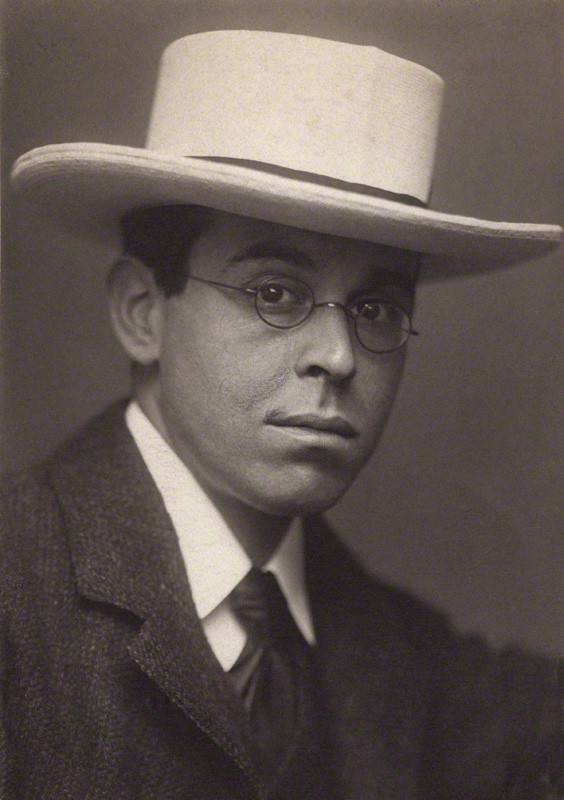
 He was by this time married to Ethel, daughter of the Chichester Cathedral sacristan, and had already committed adultery with their maid-of-all-work Lizzie.
He was by this time married to Ethel, daughter of the Chichester Cathedral sacristan, and had already committed adultery with their maid-of-all-work Lizzie..png) "First time of fornication since marriage," he entered in his diary for June 14 1906, prescient of more adulteries to come.
"First time of fornication since marriage," he entered in his diary for June 14 1906, prescient of more adulteries to come.  He moved his workshop, wife and children to Ditchling,
He moved his workshop, wife and children to Ditchling, near Lewes, acting out his theories of ideal integration: "Life and work and love and the bringing up of a family and clothes and social virtues and food and houses and games and songs and books should all be in the soup together."
near Lewes, acting out his theories of ideal integration: "Life and work and love and the bringing up of a family and clothes and social virtues and food and houses and games and songs and books should all be in the soup together."  He had started making sculpture, rejecting the modelling and pointing machine processes
He had started making sculpture, rejecting the modelling and pointing machine processes used by the majority of sculptors at this period, preferring the directness of the chisel on the stone.
used by the majority of sculptors at this period, preferring the directness of the chisel on the stone.This was also the period at which Gill was making the almost life-size sculpture he entitled Fucking.
 This carving was over protectively rechristened Ecstasy when bought for the collection at Tate Britain,
This carving was over protectively rechristened Ecstasy when bought for the collection at Tate Britain, having been discovered abandoned in a boathouse at Birchington-on-Sea.
having been discovered abandoned in a boathouse at Birchington-on-Sea. Is it relevant or is it a distraction to know that the subject of the carving is Gill's younger sister
Is it relevant or is it a distraction to know that the subject of the carving is Gill's younger sister Gladys and her husband Ernest Laughton, entwined in a position of - well - ecstasy, and that Gill's own incestuous relationship with Gladys was then in progress,
Gladys and her husband Ernest Laughton, entwined in a position of - well - ecstasy, and that Gill's own incestuous relationship with Gladys was then in progress, continuing for most of their adult life? To me it is significant in stressing the artist's dependence on the known and familial: his passion was the personal, he would not use outside models. It certainly deepens understanding of the element of voyeurism in Gill's work.For fans of Gill's type design and printed works, a trip to the Ditchling Museum in Sussex
continuing for most of their adult life? To me it is significant in stressing the artist's dependence on the known and familial: his passion was the personal, he would not use outside models. It certainly deepens understanding of the element of voyeurism in Gill's work.For fans of Gill's type design and printed works, a trip to the Ditchling Museum in Sussex will also prove rewarding. Gill moved to Ditchling from London in 1907, and stayed there until 1924. Several significant life events occurred during his time there,
will also prove rewarding. Gill moved to Ditchling from London in 1907, and stayed there until 1924. Several significant life events occurred during his time there, including the shift from being a craftsman to a fine artist (he had been working as a letter-cutter and calligrapher in London) and his conversion to Catholicism.
including the shift from being a craftsman to a fine artist (he had been working as a letter-cutter and calligrapher in London) and his conversion to Catholicism. The museum offers an opportunity to view less well-known pieces of Gill’s design, alongside giving an insight into the community and landscape that was so central to his work
The museum offers an opportunity to view less well-known pieces of Gill’s design, alongside giving an insight into the community and landscape that was so central to his work during his time in Ditchling. A number of other artists and designers joined Gill there
during his time in Ditchling. A number of other artists and designers joined Gill there , and the Museum has a large collection of works made during this period (and also after Gill left), including typographic works by Edward Johnston, who taught Gill and followed him to the village
, and the Museum has a large collection of works made during this period (and also after Gill left), including typographic works by Edward Johnston, who taught Gill and followed him to the village . It was in Ditchling that Johnston designed the original typeface and logo for the London Underground.
. It was in Ditchling that Johnston designed the original typeface and logo for the London Underground. which would later become the centre of an artists' community inspired by Gill. There he started producing sculpture – his first public success was Mother and Child (1912).
which would later become the centre of an artists' community inspired by Gill. There he started producing sculpture – his first public success was Mother and Child (1912).
In 1913, Gill became a Catholic. His father's Church of England was too easy-going for someone with Gill's spiritual and intellectual torments. He craved more strict authority, a degree of flagellation, his sins cast upon the rock that is Christ.T
Who but Gill would have been carving a life-size marble phallus, its dimensions exactly replicating his own, in the months of instruction leading up to his reception into the church at Brighton? Who else would have decided to leave the relative cosiness of Ditchling Village for Hopkins Crank,

Dominicans and took to wearing the girdle of chastity with his monastic habit. "Much good it did him," a friend said, unconvinced.

The family moved to the Crank with their three daughters, Betty then eight, Petra seven, and Joan, the youngest, three. They stayed on the Common for 11 years, until the girls were in their teens, becoming a kind of Catholic tourist attraction, a marvel of holy poverty in action.
 The Gill family grouped around the kitchen table, demonstrating the delights of home-killed pig and home-baked bread, was compared by one excited visitor to Holbein's painting of the family of St Thomas More.
The Gill family grouped around the kitchen table, demonstrating the delights of home-killed pig and home-baked bread, was compared by one excited visitor to Holbein's painting of the family of St Thomas More.
The growing girls were kept apart from their contemporaries, educated by their father and mother, enclosed by the routines of the workshops and the chapel. Modern fashions, contemporary mores did not encroach
 upon a childhood whose simplicity and sweetness is captured in Gill's exquisite series of life drawings of his pubescent daughter Petra. Girl in Bath, the nude teenager
upon a childhood whose simplicity and sweetness is captured in Gill's exquisite series of life drawings of his pubescent daughter Petra. Girl in Bath, the nude teenager  crouching in the bath tub, in a pose both homely and potentially erotic; Hair Combing, the girl standing, body plumply outlined against the long cascade of hair; The Plait, which catches the moment when the daughter is almost a woman but not quite. The Petra drawings were reworked as wood engravings and have been for many years among the most admired of all Gill's works.
crouching in the bath tub, in a pose both homely and potentially erotic; Hair Combing, the girl standing, body plumply outlined against the long cascade of hair; The Plait, which catches the moment when the daughter is almost a woman but not quite. The Petra drawings were reworked as wood engravings and have been for many years among the most admired of all Gill's works.
Do we like them the less knowing, as we know now, that during those years at Ditchling, Gill was habitually abusing his two elder daughters?
 I cannot say I was totally surprised. The flesh-and-spirit tensions in his work are palpable: this was what had in the first place attracted me to Gill as the subject for critical biography. In his portraits of his children, I was already conscious of a sort of overbalance of tendresse.
I cannot say I was totally surprised. The flesh-and-spirit tensions in his work are palpable: this was what had in the first place attracted me to Gill as the subject for critical biography. In his portraits of his children, I was already conscious of a sort of overbalance of tendresse.
The discovery of Gill's precise and candid records in his diaries of his various sexual adventures and experiments was the sort of coup any biographer would long for and yet in some way dread. I knew that it could alter fundamentally perceptions of Gill, both as man of God and as artist. Impossible to view without a frisson, those delicate, delicious portraits of the teenage Petra. Having read Gill's own account of his experimental
 sexual connections with his dog in a later craft community at Pigotts near High Wycombe,
sexual connections with his dog in a later craft community at Pigotts near High Wycombe,  his woodcut The Hound of St Dominic develops some distinctly disconcerting features. The knowing affects the viewing. How can it not? But Gill is too good an artist, too ferocious and intrepid a controversialist, to be protected and glossed over. We need to see him whole.
his woodcut The Hound of St Dominic develops some distinctly disconcerting features. The knowing affects the viewing. How can it not? But Gill is too good an artist, too ferocious and intrepid a controversialist, to be protected and glossed over. We need to see him whole.In 1924, when Gill's affairs in Ditchling had reached a crisis point, he suddenly left Sussex. With his tribal entourage of family and animals, apprentices, dependents, who included the painter David Jones, he settled in the ruined Benedictine monastery at Capel-y-ffin in the Black Mountains of Wales. Here he designed his brilliantly workmanlike typefaces for Monotype, typically throwing his reservations about machine production to the winds. Gill Sans, the sans serif typeface used on the covers of pre-war Penguin books, is rightly lauded in the current V&A Modernism exhibition as the first British modernist type design.
A self-described "disciple" of the Ceylonese philosopher and art historianAnanda Coomaraswamy
 , Gill was fascinated during this period by Indian temple sculpture. Along with his friend and collaborator Jacob Epstein,
, Gill was fascinated during this period by Indian temple sculpture. Along with his friend and collaborator Jacob Epstein, he planned the construction in the Sussex countryside of a colossal, hand-carved monument in imitation of the large-scale Jainstructures at Gwalior Fort in Madhya Pradesh
he planned the construction in the Sussex countryside of a colossal, hand-carved monument in imitation of the large-scale Jainstructures at Gwalior Fort in Madhya Pradesh , to which he had been introduced by the Indiaphile William Rothenstein.
, to which he had been introduced by the Indiaphile William Rothenstein.
In 1913 he moved to Hopkin's Crank at Ditchling Common, two miles north of the village. In 1914 he produced sculptures for the stations of the cross in Westminster Cathedral. In the same year he met the typographer Stanley Morison. After the war, together with Hilary Pepler and Desmond Chute, Gill founded The Guild of St Joseph and St Dominic at
After the war, together with Hilary Pepler and Desmond Chute, Gill founded The Guild of St Joseph and St Dominic at  Ditchling, where his pupils included the young David Jones, who soon began a relationship with Gill's daughter, Petra.
Ditchling, where his pupils included the young David Jones, who soon began a relationship with Gill's daughter, Petra.
 After the war, together with Hilary Pepler and Desmond Chute, Gill founded The Guild of St Joseph and St Dominic at
After the war, together with Hilary Pepler and Desmond Chute, Gill founded The Guild of St Joseph and St Dominic at  Ditchling, where his pupils included the young David Jones, who soon began a relationship with Gill's daughter, Petra.
Ditchling, where his pupils included the young David Jones, who soon began a relationship with Gill's daughter, Petra.
Gill soon tired of Capel-y-ffin, coming to feel that it had the wrong atmosphere and was too far from London, where most of his clients were. In 1928 he moved to Pigotts at Speen near High Wycombe in Buckinghamshire,
 where he set up a printing press and lettering workshop. He took on a number of apprentices, including David Kindersley, who in turn became a successful sculptor and engraver, and John Skelton (1923–99), his nephew,
where he set up a printing press and lettering workshop. He took on a number of apprentices, including David Kindersley, who in turn became a successful sculptor and engraver, and John Skelton (1923–99), his nephew, and also noted as an important letterer and sculptor. Other apprentices included Laurie Cribb, Donald Potter and Walter Ritchie.Others in the household included Denis Tegetmeier, married to Gill's daughter Petra, and Rene Hague, married to the other daughter, Joanna.
and also noted as an important letterer and sculptor. Other apprentices included Laurie Cribb, Donald Potter and Walter Ritchie.Others in the household included Denis Tegetmeier, married to Gill's daughter Petra, and Rene Hague, married to the other daughter, Joanna.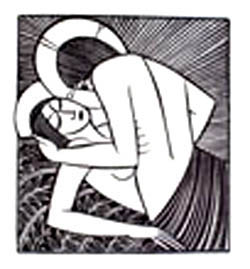
An in-situ example of Gill's design and personal cutting of his Perpetua typeface can be found in the nave of Poling church in West Sussex
 , on a wall plaque commemorating the life of Sir Harry Johnston
, on a wall plaque commemorating the life of Sir Harry Johnston . The Perpetua design was followed by the Gill Sans typeface in 1927–30, based on the sans serif lettering originally designed for the London Underground. (Gill had collaborated with Edward Johnston in the early design of the Underground typeface, but dropped out of the project before it was completed.) In the period 1930–31 Gill designed the typeface Joanna which he used to hand-set his book, An Essay on Typography.In 1924 he moved to Capel-y-ffin in Wales, where he set up a new workshop,
. The Perpetua design was followed by the Gill Sans typeface in 1927–30, based on the sans serif lettering originally designed for the London Underground. (Gill had collaborated with Edward Johnston in the early design of the Underground typeface, but dropped out of the project before it was completed.) In the period 1930–31 Gill designed the typeface Joanna which he used to hand-set his book, An Essay on Typography.In 1924 he moved to Capel-y-ffin in Wales, where he set up a new workshop, to be followed by Jones and other disciples. In 1925 he designed the Perpetua typeface, with the uppercase based upon monumental Roman inscriptions, for Morison, who was working for the Monotype Corporation.
to be followed by Jones and other disciples. In 1925 he designed the Perpetua typeface, with the uppercase based upon monumental Roman inscriptions, for Morison, who was working for the Monotype Corporation.In 1928–9, Gill carved three of eight relief sculptures on the theme of winds for Charles Holden's headquarters for the London Electric Railway (now Transport for London) at 55 Broadway, St James's.
 He carved a statue of the Virgin and Child for the west door of the chapel at Marlborough College
He carved a statue of the Virgin and Child for the west door of the chapel at Marlborough College
As the revelations about Gill's private life reverberated, there was a reassessment of his personal and artistic achievement. As his recent biographer sums up:A deeply religious man, largely following the Roman Catholic faith, his beliefs and practices were by no means orthodox. He published numerous essays on the relationship between art and religion. He also produced a number of erotic engravings
His personal diaries describe his sexual activity in great detail including the fact that Gill sexually abused his own children, had an incestuous relationship with his sister and performed sexual acts on his dog. This aspect of Gill's life was little known until publication of the 1989 biography by Fiona MacCarthy. The earlier biography by Robert Speaight mentioned none of it.
His personal diaries describe his sexual activity in great detail including the fact that Gill sexually abused his own children, had an incestuous relationship with his sister and performed sexual acts on his dog. This aspect of Gill's life was little known until publication of the 1989 biography by Fiona MacCarthy. The earlier biography by Robert Speaight mentioned none of it.

After the initial shock, […] as Gill's history of adulteries, incest, and experimental connection with his dog became public knowledge in the late 1980s, the consequent reassessment of his life and art left his artistic reputationstrengthened. Gill emerged as one of the twentieth century's strangest and most original controversialists, a sometimes infuriating, always arresting spokesman for man's continuing need of God in an increasingly materialistic civilization, and for intellectual vigour in an age of encroaching triviality.
Gill died of lung cancer in Harefield Hospital, Hillingdon (formerly Middlesex), in 1940. He was buried in Speen churchyard in the Chilterns, near Princes Risborough, the village where his last artistic community had practised. His papers and library are archived at the William Andrews Clark Memorial Library at UCLA. Almost everyone in England has an Eric Gill in reach. Coming unexpectedly across a work by Gill - a carved font in a rarely opened church, a gravestone in a rural cemetery, moss creeping in between the precision-cut Gill letters - is an odd and hauntingly intense experience. These relatively humble works remind us of the extraordinary sureness of his touch. In their offhand way, they celebrate the man who was, by his own account, a stranger in a strange land.
Almost everyone in England has an Eric Gill in reach. Coming unexpectedly across a work by Gill - a carved font in a rarely opened church, a gravestone in a rural cemetery, moss creeping in between the precision-cut Gill letters - is an odd and hauntingly intense experience. These relatively humble works remind us of the extraordinary sureness of his touch. In their offhand way, they celebrate the man who was, by his own account, a stranger in a strange land.
 Almost everyone in England has an Eric Gill in reach. Coming unexpectedly across a work by Gill - a carved font in a rarely opened church, a gravestone in a rural cemetery, moss creeping in between the precision-cut Gill letters - is an odd and hauntingly intense experience. These relatively humble works remind us of the extraordinary sureness of his touch. In their offhand way, they celebrate the man who was, by his own account, a stranger in a strange land.
Almost everyone in England has an Eric Gill in reach. Coming unexpectedly across a work by Gill - a carved font in a rarely opened church, a gravestone in a rural cemetery, moss creeping in between the precision-cut Gill letters - is an odd and hauntingly intense experience. These relatively humble works remind us of the extraordinary sureness of his touch. In their offhand way, they celebrate the man who was, by his own account, a stranger in a strange land.
An artist through and through.
ReplyDelete